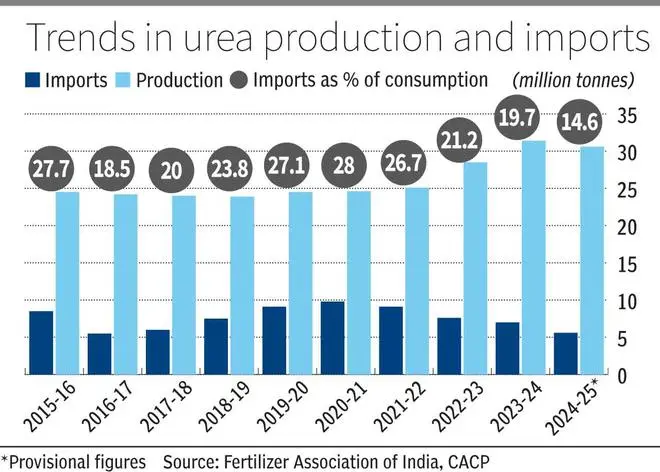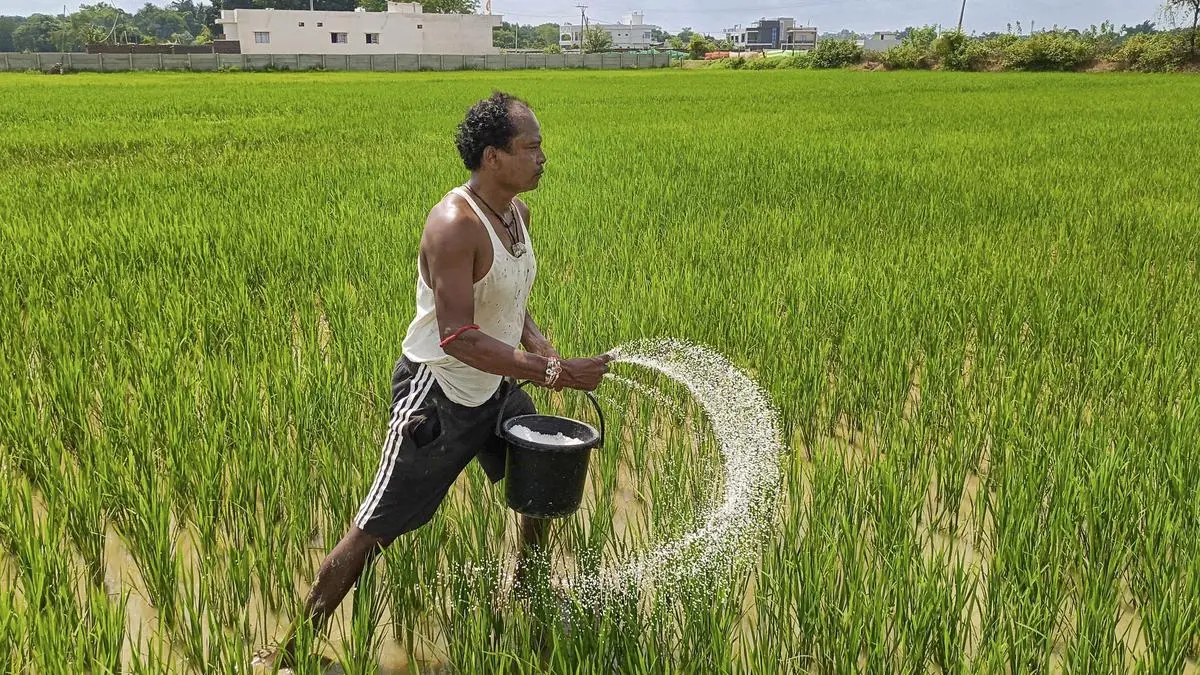India’s crop advisory body, the Commission for Agricultural Costs and Prices (CACP), has recommended that urea price be increased in a phased manner to curb the imbalanced use of nutrient.
In its latest report on Price Policy for Rabi marketing season 2026-27, CACP, in its non-price recommendations, said, “The urea sector in India, which was highly dependent on imports, is now moving towards achieving self-sufficiency due to government initiatives. However, the current fertilizer subsidy structure has led to excessive use of urea resulting in imbalanced use of nutrients.”
“The Commission recommends that urea price should be increased in a phased manner and subsidy savings on account of increase in urea prices should be used for providing higher subsidy to farmers on P & K fertilizers to address the problem of nutrient imbalance,” CACP said.
The urea price is highly subsidised by the government. Urea is provided to the farmers at a statutorily notified maximum retail price of ₹242 per 45-kg bag (exclusive of charges towards neem coating and taxes as applicable).
The CACP observed that excessive use of highly subsidised urea has resulted in distorted NPK ratio and much higher consumption than recommended levels, more than 500 kg per hectare in some districts of Andhra Pradesh and Tamil Nadu. Therefore, it is critical to take corrective actions and mitigate adverse impacts on crop yield, soil health and environment, it said.
Relying on imports
India is heavily dependent on imports of both raw materials and finished fertilizers and about 30 per cent of demand is met through imports. However, over the past 10 years, India’s urea imports have declined as domestic production has picked up due to various government initiatives resulting in significant expansion in urea production and progress towards achieving atmanirbharta, CACP said.
Between 2015-16 and 2023-24, India’s urea production increased from 24.5 million tonnes (mt) to a record 31.4 mt, but marginally declined to 30.6 mt in 2024-25. On the other hand, imports declined from 8.5 mt in 2015-16 to 5.6 mt in 2024-25, after reaching a peak of 9.8 mt in 2020-21. The share of imports in total urea consumption has declined from 27.7 per cent in 2015-16 to 14.6 per cent in 2024-25.

However, Indian agriculture is also grappling with issues stemming from imbalanced use of nutrients, excessive use of fertilizers in some regions, deficiency of micro-nutrients, depletion of soil organic carbon and rising fertilizer subsidy.
“As problems of micronutrient deficiencies and low organic carbon in Indian soils are widespread, a nationwide intensive awareness campaign on balanced nutrition with special focus on use of micronutrients and bio-fertilizers should be launched,” CACP observed.
Govt programmes
The government has launched various initiatives including Prime Minister’s Programme for Restoration, Awareness Building, Nourishment, and Amelioration of Mother Earth (PM-PRANAM), Galvanizing Organic Bio-Agro Resources Dhan (GOBARdhan), promotion of nano-fertilizers and bio-fertilizers, among others to promote sustainable and balanced use of fertilizers.
“Since balanced fertilizer application based on soil test recommendations is crucial for cost reduction and improving nutrient efficiency and long-term soil fertility, the Commission recommends strengthening soil testing laboratories, installing modern equipments, and providing hands-on training to staff for real-time soil analysis and advisory services to farmers,” it said.
In the ongoing kharif season, farmers in many States faced shortage of urea. Factors such as excess use of urea in view of early and good monsoon coupled with the rising prices due to the geopolitical situation and ban on exports from China were attributed to the shortage.
Published on October 2, 2025
